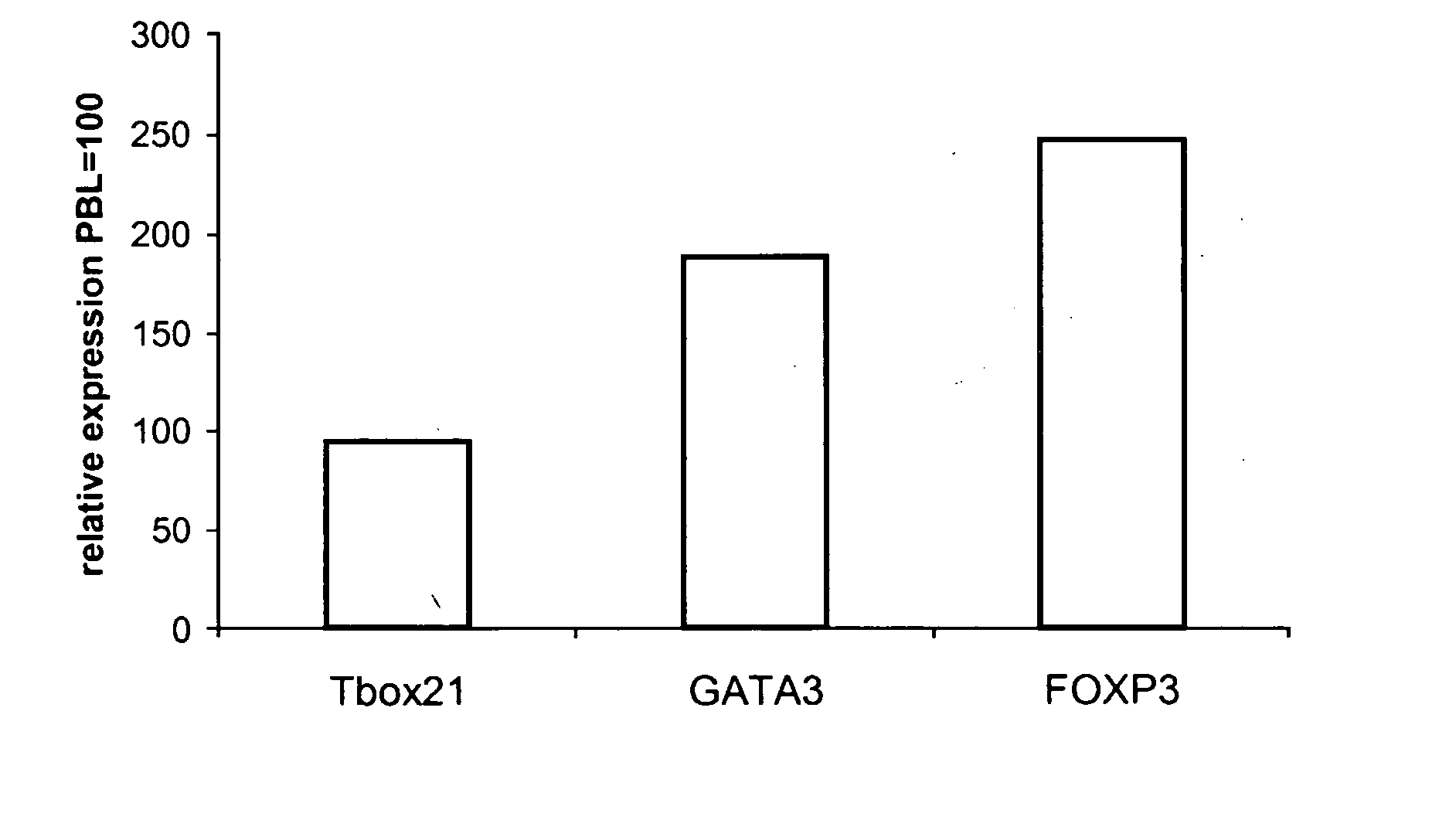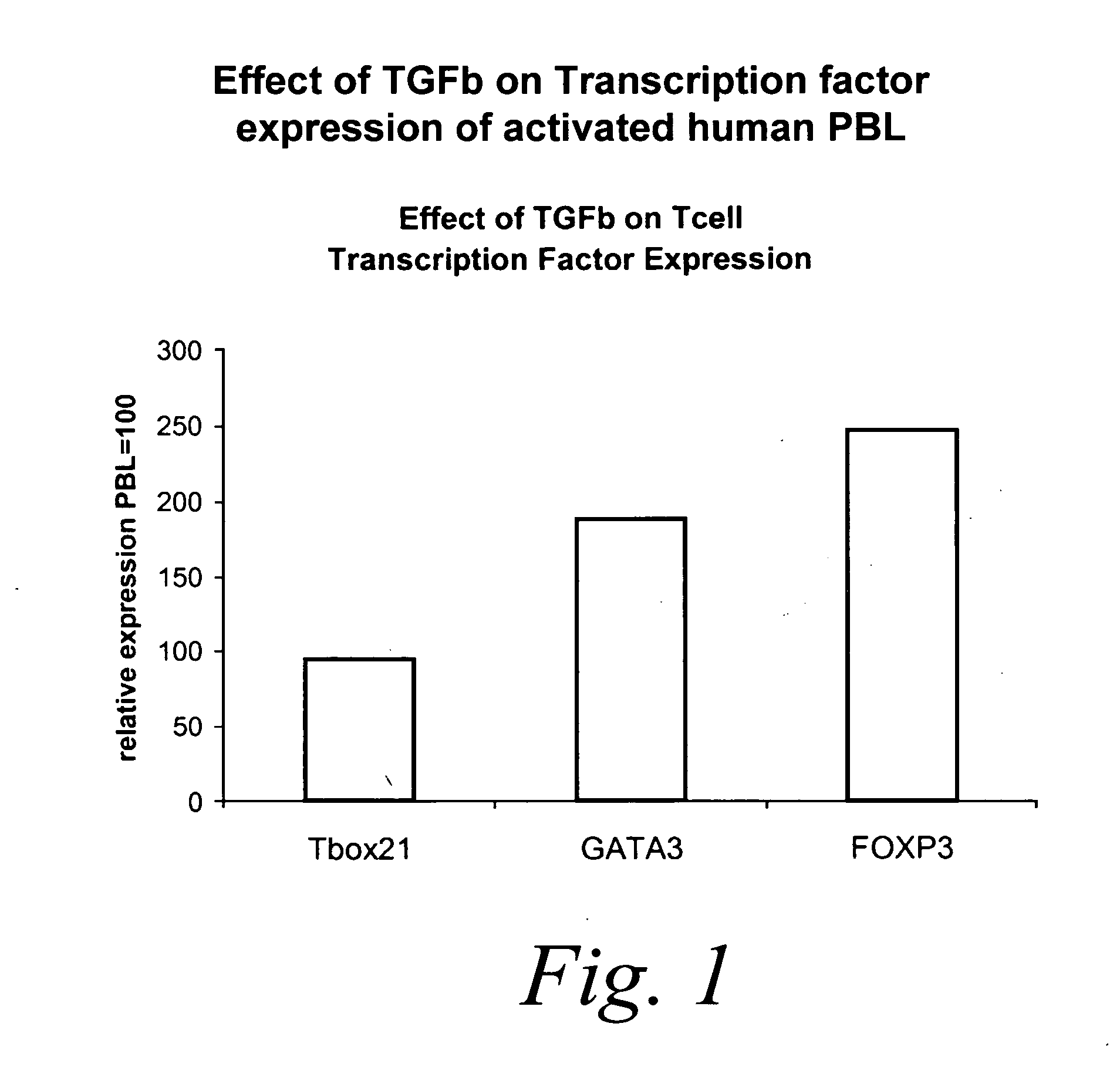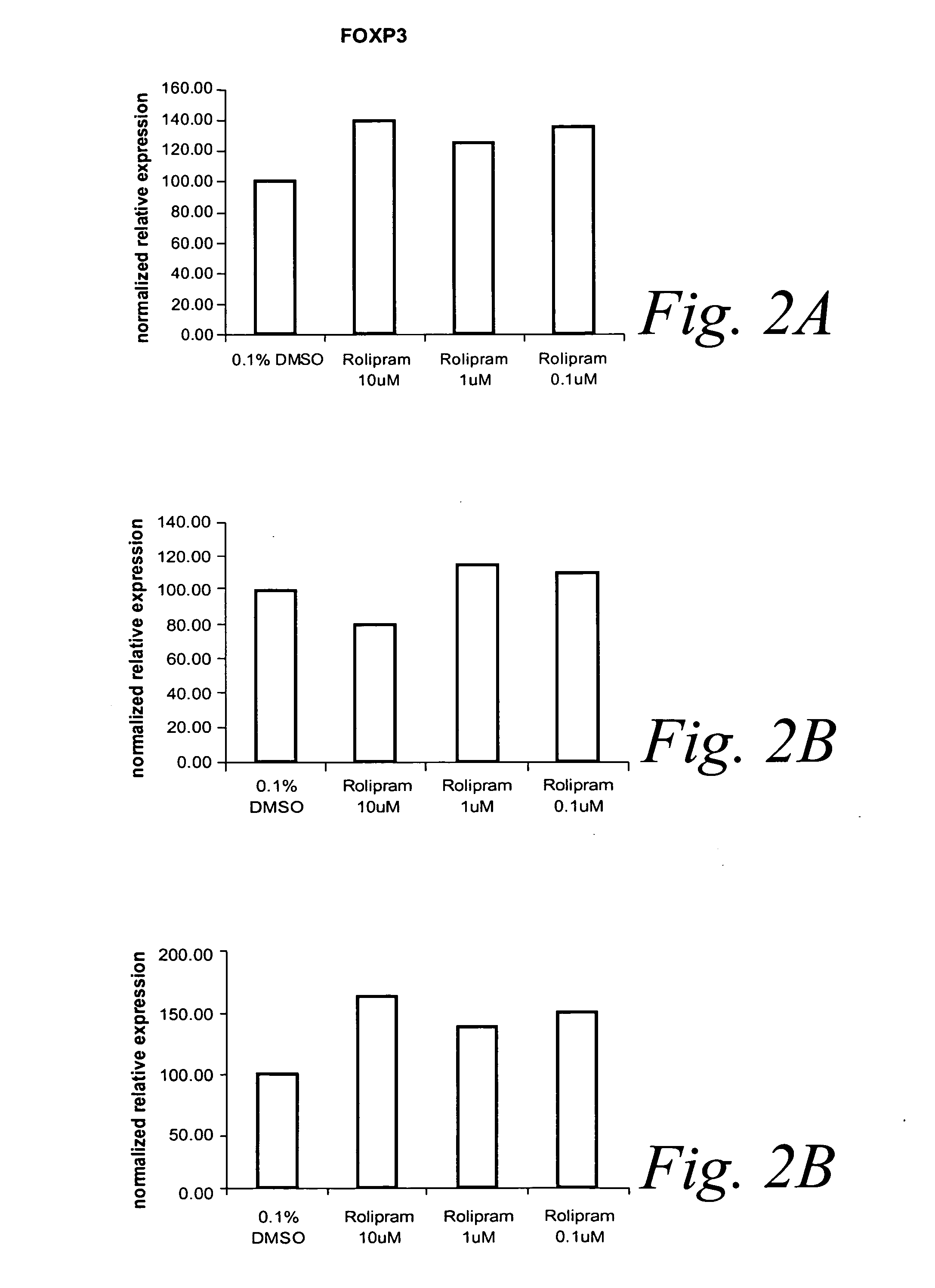Molecules preferentially associated with effector T cells or regulatory T cells and methods of their use
a technology of regulatory t cells and molecules, which is applied in the direction of animal cells, peptide/protein ingredients, depsipeptides, etc., can solve the problems of undesirable effector t cells, relapse of disease, and numerous harmful side effects
- Summary
- Abstract
- Description
- Claims
- Application Information
AI Technical Summary
Problems solved by technology
Method used
Image
Examples
example 1
Identification of Genes Preferentially Expressed in T Effector Cells or T Regulatory Cells Using Affymetrix™ Gene Chips
[0230] Methods
[0231] Culture of T cell lines
[0232] Differentiated cell lines were produced from cells prepared from human cord blood or peripheral blood CD4+CD45RA+ naïve T cells by a variety of methods, including flow cytometry and magnetic bead separations. Purity of the starting populations was >95%. Cells were then stimulated by CD3 and CD28 antibodies in RPMI 1640 with 10% FCS and 1% Human AB serum with defined mixtures of cytokines and neutralizing antibodies to cytokines to produce the differentiated cell types. Th1 cells were produced by culture with IL12 (62 U / ml) and anti-IL4 (0.2 ug / ml); Th2 cells were produced by culture in IL4(145 U / ml) and anti-IL12 (10 ug / ml) and anti-IFNγ (10 ug / ml); and regulatory T cells were produced by culture in TGFβ (32 U / ml), IL9 (42 U / ml), anti-IL4 (10 ug / ml) and anti-IL12 (10 ug / ml) and anti-IFNγ(10 ug / ml). (Note: anti-IL...
example 2
Effect of TGFβ1 on Transcription Factor Expression of Activated Human Peripheral Blood Lymphocytes (PBL)
[0236] This example describes the effect of TGFβ1 on the expression levels of Tbox 21, GATA3 and FOXP3 expression in anti-CD3 / anti-CD28 stimulated PBLs. Real-time PCR was used to quantitate the levels of transcription factor mRNA in the presence and absence of TGFβ1.
[0237] PBL were stimulated for 72 hours with anti-CD3 / anti-CD28 in the presence or absence of TGFβ1 and total RNA was extracted using a QiganRNeasy Mini Kit according to manufacturer's instructions. RNA was stored at minus 80° C.
[0238] cDNA was prepared from RNA using the Applied Biosystems High-Capacity cDNA Archive Kit according to manufacturer's instructions.
[0239] One μg cDNA was amplified using Applied Biosystems Assays-on-Demand™ Gene Expression products (i.e., TaqMan Universal PCR Mastermix and Assay-on-Demand solution, including marker specific primers) according to the following protocol, in accordance wit...
example 3
Effect of AH6809, An Antagonist of Prostaglandin E1 / E2 Receptors, on Transcription Factor Expression of Activated Human PBL
[0242] This example describes the effect of AH6809, an antagonist of Prostaglandin E1 / E2 receptors, on the expression levels of the transcription factors, TBX 21, GATA3 and FOXP3, in anti-CD3 / anti-CD28 stimulated PBLs.
[0243] Real-time PCR was used to quantitate the levels of transcription factor mRNA in the presence and absence of AH6809.
[0244] Cells, RNA and cDNA were prepared as described in Example 2, except cells were grown in the presence of AH6809 at 0.1 μM, 1.0 νM and 10 μM or 0.1% DMSO (control). QPCR was performed as described in Example 2 and the relative expression of transcription factor at each concentration of AH6809 was determined. Data are presented in FIGS. 2A, 2B and 2C. Relative expression was calculated assuming that the levels of transcription factor mRNA in stimulated PBL in the presence of DMSO was 100%.
[0245]FIG. 2A shows that in the ...
PUM
| Property | Measurement | Unit |
|---|---|---|
| apparent molecular weight | aaaaa | aaaaa |
| temperature | aaaaa | aaaaa |
| temperature | aaaaa | aaaaa |
Abstract
Description
Claims
Application Information
 Login to View More
Login to View More - R&D
- Intellectual Property
- Life Sciences
- Materials
- Tech Scout
- Unparalleled Data Quality
- Higher Quality Content
- 60% Fewer Hallucinations
Browse by: Latest US Patents, China's latest patents, Technical Efficacy Thesaurus, Application Domain, Technology Topic, Popular Technical Reports.
© 2025 PatSnap. All rights reserved.Legal|Privacy policy|Modern Slavery Act Transparency Statement|Sitemap|About US| Contact US: help@patsnap.com



